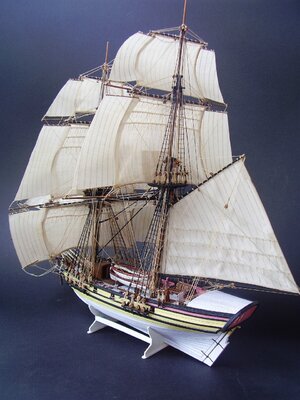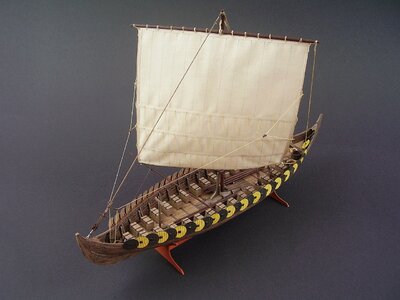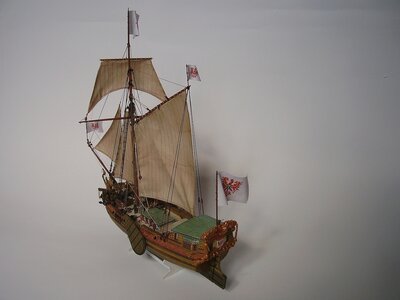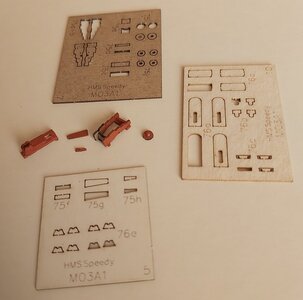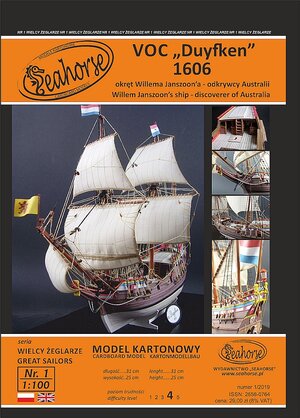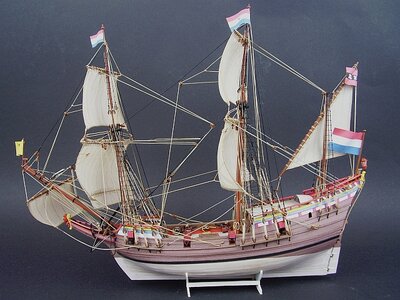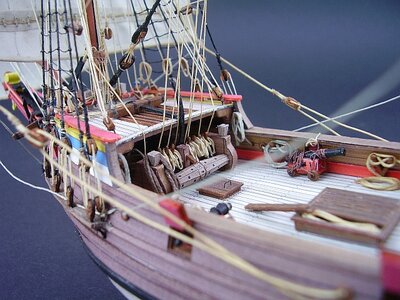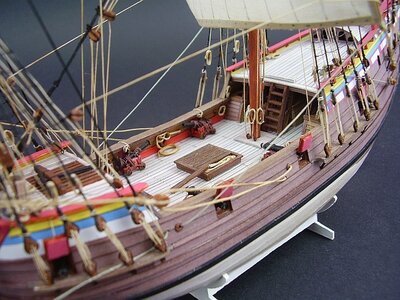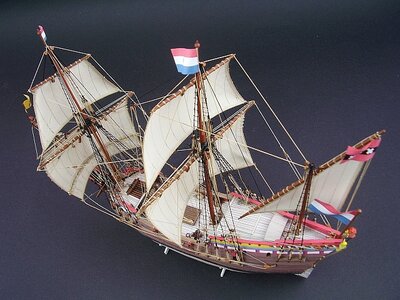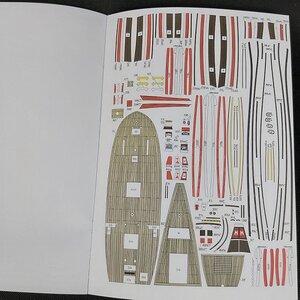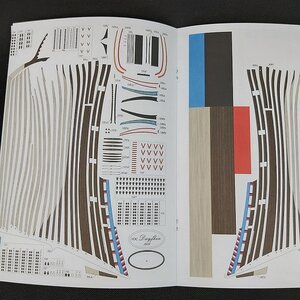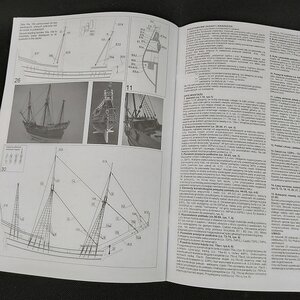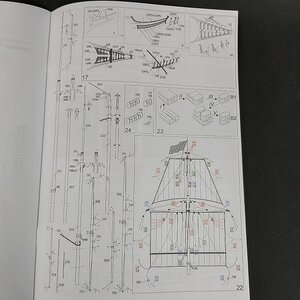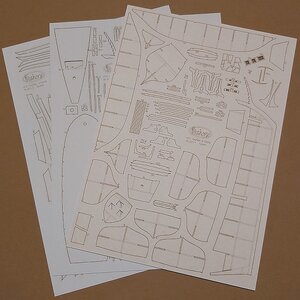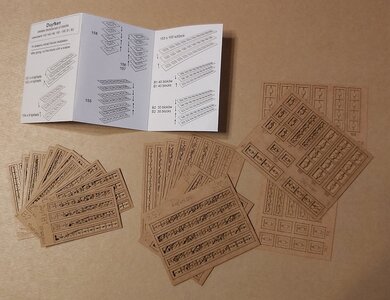Hi,
let me introduce you to the recently created Polish publishing house "Seahorse" dealing with the design of cardboard models of sailing ships.
It was created "naturally" after fifteen years of designing and building cardboard sailing ships for various other publishers. So it's time to start own publishing house.
Earlier projects were published in "Modelarstwo Okrętowe" (cutters HMS Speedy 1822 and HMS Fly 1763) and in the WAK publishing house (Trabaccolo, Saettia, Muleta de Seixal, Allege d'Arles, Grosse Jacht, Gokstadskipet, HMS Badger). Certainly, these models are known to enthusiasts of cardboard boatbuilding.
We currently have four new models that I will present in the next posts (VOC Duyfken 1606, Sao Gabriel, Leudo vinacciere, Armed Virginia Sloop). Three of them were presented here on the SOS forum.
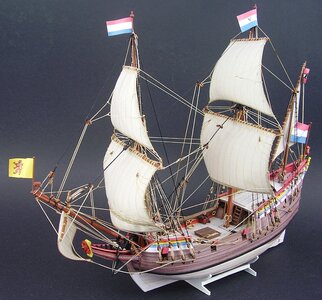
VOC Duyfken 1606
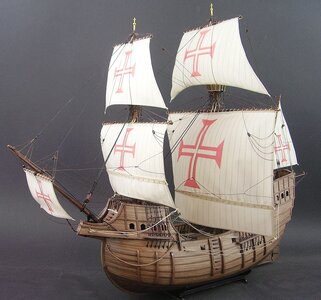
>>> Sao Gabriel
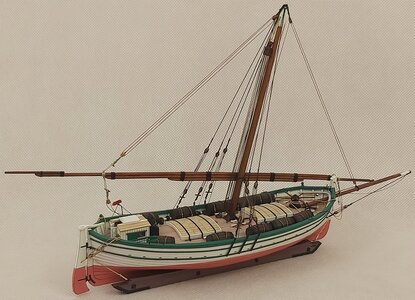
>>> Leudo Vinacciere
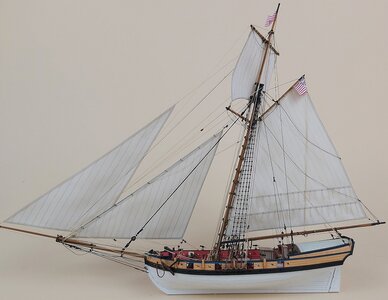
>>> Armed Virginia Sloop
We have dedicated laser-cut frames, first plating layers. gun carriages and block sets for all models. The offer also includes sails printed on a delicate cotton canvas and sets of sticks of which you can prepare spars.
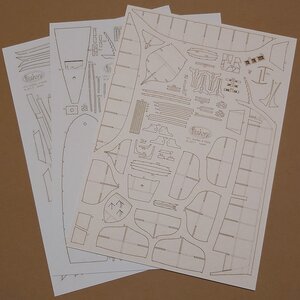
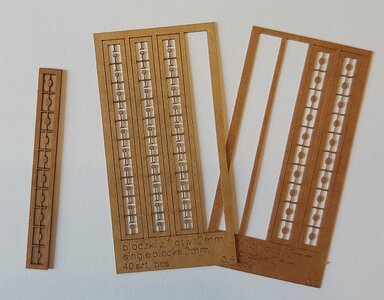
The very process of building a cardboard sailing ship is much simpler than wooden structures, although you should remember about the specific properties of cardboard / paper and learn how to shape and glue it. You don't need sophisticated tools or a separate workshop. All you need is scissors, a sharp scalpel (Olfa or a surgical blade), a cutting pad, three types of glue and some paints. Cardboard sailing ships are a budget version of this wonderful hobby, but they are in no way inferior to wooden models, since they have their own separate class in the international NAVIGA competition.
I am happy to answer any questions you may have. You can also find us on Facebook HERE or write to "wydawnictwo@seahorse.pl"
Greetings
let me introduce you to the recently created Polish publishing house "Seahorse" dealing with the design of cardboard models of sailing ships.
It was created "naturally" after fifteen years of designing and building cardboard sailing ships for various other publishers. So it's time to start own publishing house.
Earlier projects were published in "Modelarstwo Okrętowe" (cutters HMS Speedy 1822 and HMS Fly 1763) and in the WAK publishing house (Trabaccolo, Saettia, Muleta de Seixal, Allege d'Arles, Grosse Jacht, Gokstadskipet, HMS Badger). Certainly, these models are known to enthusiasts of cardboard boatbuilding.
We currently have four new models that I will present in the next posts (VOC Duyfken 1606, Sao Gabriel, Leudo vinacciere, Armed Virginia Sloop). Three of them were presented here on the SOS forum.

VOC Duyfken 1606

>>> Sao Gabriel

>>> Leudo Vinacciere

>>> Armed Virginia Sloop
We have dedicated laser-cut frames, first plating layers. gun carriages and block sets for all models. The offer also includes sails printed on a delicate cotton canvas and sets of sticks of which you can prepare spars.


The very process of building a cardboard sailing ship is much simpler than wooden structures, although you should remember about the specific properties of cardboard / paper and learn how to shape and glue it. You don't need sophisticated tools or a separate workshop. All you need is scissors, a sharp scalpel (Olfa or a surgical blade), a cutting pad, three types of glue and some paints. Cardboard sailing ships are a budget version of this wonderful hobby, but they are in no way inferior to wooden models, since they have their own separate class in the international NAVIGA competition.
I am happy to answer any questions you may have. You can also find us on Facebook HERE or write to "wydawnictwo@seahorse.pl"
Greetings


